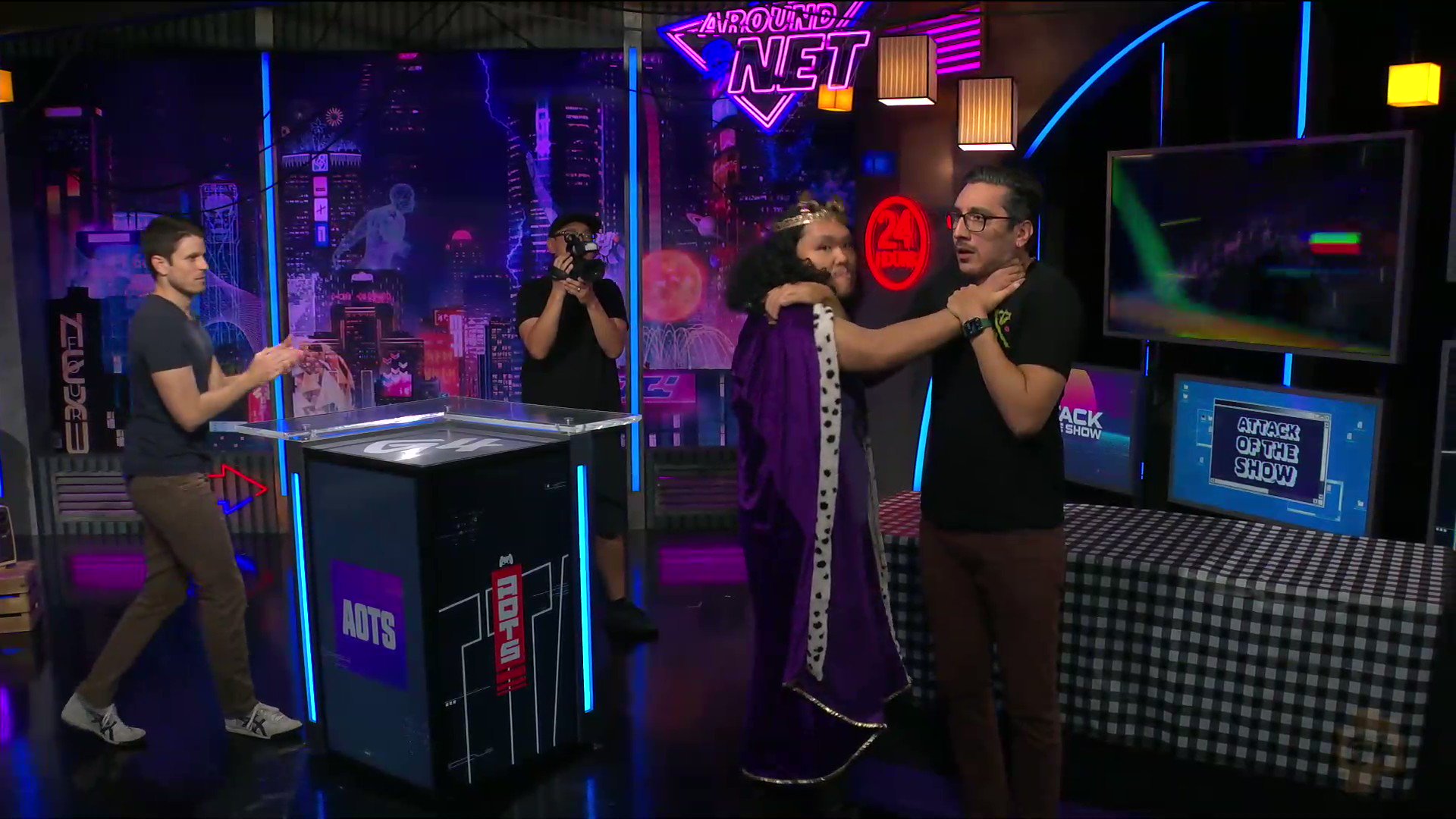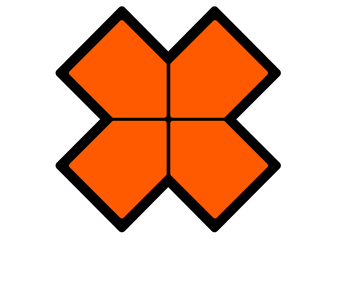The Rise, Fall, Revival, and Eventual Death of G4TV
The life cycle of a once-beloved gaming culture pioneer

If you love video games, then right now is a really good time for you to be alive (for the most part). There are endless resources at your disposal to get news, updates, gameplay footage, announcements, and general discussions surrounding the entire ecosystem of interactive entertainment. Google, YouTube, Twitch, TikTok, Instagram, Twitter (X?), Facebook – all of these can be easily accessible, relatively free resources to figure out anything and everything you want to know about games. Want to know when the next big Call of Duty is coming out? Type it in the search bar. Unsure if the newest Fromsoft game is something you would be into? Watch a streamer play it on Twitch. Curious to see what the next Destiny expansion is? Load up the release trailer on YouTube. The convenience and speed with which modern gaming enthusiasts can find information and reviews for their favorite games is nothing short of mesmerizing.
Twenty-odd years ago, this level of convenience was only a pipe dream in the heads of gamers everywhere. Most people were still getting their news out of monthly issued magazines like Nintendo Power and Game Informer, flipping through the same pages for a month straight until the next issue arrived or would be purchasable from stores. Some internet presence was available to surf through, but it definitely wasn't the norm to hop onto Google and try to seek out specific information for upcoming games and news. I distinctly remember being a child and my older sister going online and printing a hard copy of a walk-through for the Shadow Temple for The Legend of Zelda: Ocarina of Time, only for my mother to get upset since printer ink was (and still is) extremely expensive. We had a "computer room," which the family computer was in, and it was nowhere near the TV, so it was the best solution my sister had. The idea of watching a video tutorial and following along wasn't something we even considered. With that being the case, in the US at least, there was really only one place to get your video game fix in the early 2000s – a television station known as G4TV.
The Rise
G4TV (an acronym that bafflingly stands for "TV For Gamers") launched on April 24th, 2002 out of Glendale, California. It was initially created to cater specifically to 12-34-year-olds, a notoriously difficult demographic to corner consistently. Originally, its goal was to follow in the footsteps of MTV, giving advertisers a non-traditional avenue to show their advertisements, along with the expectation that video game developers themselves would eventually produce programming for the channel. While it never quite got that granular, the first few years of G4TV contained some seriously excellent programming.

Within the first 5 years of its launch, there was an easy introduction to esports known as Arena, an entire show dedicated to tips, tricks, and cheat codes for the most popular games at the time known as Cheat!, and an interesting look into game development known as Game Makers. The two real titans of the channel, however, were a show that combined segments about all things gaming and pop culture known as Attack of the Show! (AOTS), and a video game review show known as X-Play.
While G4 launched with excellent programming, AOTS and X-Play are probably the two most people remember. AOTS is one of those programs that is difficult to explain, but instantly enjoyable. Hosts Kevin Pereria, Kevin Rose, Sarah Lane, and Brendan Moran would talk about nerdy pop culture, including segments, sketches, and challenges. Kevin Pereria described the beginning of AOTS as the "Wild West," as a show like this had never been done before, and it certainly felt like very little was off-limits, especially in the earlier seasons. AOTS was not only one of G4's biggest shows, but it also helped launch the career of Olivia Munn, who quickly became one of the favorite cast members on the show itself. AOTS didn't always land every shot it took, but it was guaranteed to be an entertaining hour. To top this off, it gave an air of legitimacy to the world of the nerd, which was a significantly more niche space to be in in the early 2000s.
AOTS was fantastic, but for me, it was all about X-Play, a gaming review show hosted by Adam Sessler and Morgan Webb, along with a few co-hosts throughout the years. I couldn't get enough video games when I was a kid, and back then, I couldn't just grab my phone to see what great games were out and which ones I wanted to beg my parents for or spend my allowance on. X-Play stepped in to fill that gap, and it was a regular part of my television viewing experience growing up.
It probably seems a bit basic by today's standards – two hosts discuss games that have recently come out, express their assessment of the gameplay experience, and give it a rating out of five stars. There were jokes and quips throughout each review and sometimes skits between each segment, but at its core, X-Play was one of the best ways to get honest opinions on games before you bought them. Astonishingly, it was really the only way to see a game in motion before purchase, other than commercials, which are notorious for stretching the truth about a game's true quality. Despite that, its real success came down to the likability of Adam Sessler and Morgan Webb. Their enthusiasm for the subject matter, in conjunction with their chemistry and seemingly real comradery, made it impossible not to want to see what they had to say about the next big game. Many Christmas lists and birthday gifts were chosen based on their analyses. While it may not have always aged particularly gracefully, watching any old X-Play review sets my nostalgia into overdrive.
These two programs, along with the litany of other throw-everything-at-the-wall-and-see-what-sticks content, made G4 out to be the future of gaming entertainment. Since there were very few rules regarding what video game TV should look like, G4 took a lot of swings at a lot of different styles of television. In the mid-2000s it seemed like they were forever going to be on our TVs, making us laugh with nerdy skits and gifting us with the E3 coverage we all so desperately wanted and couldn't find anywhere else.
That was, until the internet happened.

The Fall
When historians discuss this current age in human history, one sentiment will stick out above all others: the internet changed the whole world. Commerce, journalism, news, socializing, research, communication, and of course, entertainment, have shifted dramatically within the last few decades, all thanks to the World Wide Web. Unfortunately for G4, this included how people consumed games media. As the internet became more prevalent through the early 2000s, the viewership of G4 began to seriously decline. That (on top of some less-than-stellar new programs slated for the channel) led to a drastic change in 2005 that all but guaranteed G4 was headed toward the grave.
In September of 2005, Neal Tiles became G4's new president. During his tenure, he stated that G4 would focus more on "male-oriented programming," stating that, quote, "guys like to play games, but not necessarily watch a bunch of shows with games on the screen." The last 15 years of YouTube Let's Plays and streamers have shown that this wasn't exactly a timeless take, and it started to reflect in the programming shown on G4 at the time. Slowly but surely, the emphasis was drawn away from gaming and put more on shows like Cops and Code Monkeys. Unsurprisingly, it would appear that the people who wanted to tune into "TV For Gamers" didn't want cheap reality programming, they wanted games, and when the channel started to flounder, they found their gaming content elsewhere. Specifically, the internet.
The internet becoming our main source of gaming information was always inevitable, just as it has become our main source for practically everything. That being said, I believe that the gross misunderstanding by Neal Tiles of what their core audience really wanted is primarily what drove people away from G4 prematurely. Around 2006-2007, I too started drifting away from X-Play and AOTS because they were becoming harder and harder to catch among the pool of programs that became so saturated with trash TV.
G4 hung on for a long time, finally shutting its doors on November 30th, 2014. The send-off was appropriate and poignant – it ended with a marathon of the Top 100 Video Games of All Time, with the final program being the debut episode of X-Play. After the episode ended, a game of pong started playing, as it did with the launch of the program, which got smaller and smaller until it became nothing more than a pixel. The final sounds heard were one of the program hosts shouting "I'm at Comic-Con!", then the Atari 2600 Donkey Kong death sound and the Game Boy start-up chime, With that, the final nail had been placed in the coffin of G4TV. After numerous victories and defeats, gaming's greatest television network was officially dead.
Or was it?
The Revival
In July 2020, during the height of the pandemic, the Twitter (or.. X?) accounts for X-Play and AOTS were reactivated, posting a teaser trailer announcing the return of G4TV, slated for 2021. On top of this, G4's website was reinstated and fittingly featured a playable version of Pong. If a player were to win this game of Pong, they would be given the opportunity to sign up for a mailing list regarding updates to G4TV's new launch and receive a free commemorative t-shirt.
Like everything else in 2020, this felt a little bit like a fever dream, but this one was at least welcome. A few more months passed with information trickling in, like talks that Olivia Munn would be returning and a video from Adam Sessler asking fans to submit applications or nominate people to be the new hosts of G4. With every passing month, it seemed like this was really going to happen, Everything came to a head in November of 2020, when a huge roundtable-style interview (known as A Very Special G4 Holiday Reunion Special) hosted by Ron Funches premiered on Twitch and YouTube. Kevin Pereira, Olivia Munn, Adam Sessler, Morgan Webb, Kristin Adams, and Blair Herter were all featured, reminiscing about their time at G4 and what the future held for the channel's fabled relaunch. I'll be honest, I was extremely hopeful when I watched this, as my nostalgic overload made me feel like it was actually possible for G4 to make a big comeback and be the gaming powerhouse it had once been.
X-Play and AOTS would be returning, with a slew of new programming announced alongside a multitude of new talent to host them. G4 launched a brand known as B4G4, posting content on YouTube and Twitter. Shows involving gaming news, WWE and Dungeons and Dragons partnerships, Ninja Warrior, and more popular YouTubers and Cosplayers than you could shake a stick at. Even select episodes of gaming YouTube darling Scott the Woz were going to air on the channel. It seemed like the stars were aligning for G4's success, with the channel officially relaunching on November 16th, 2021.

Unsurprisingly, it would appear that the people who wanted to tune into "TV For Gamers" didn't want cheap reality programming, they wanted games, and when the channel started to flounder, they found their gaming content elsewhere.
I tuned in when it relaunched, and it was apparent from the beginning that this new beginning was a little bit sloppy. The information about what programs were airing where was difficult to parse, and the new programs themselves were often lackluster at best. I was watching X-Play and AOTS, with the formulas largely unchanged, but it was obvious something was missing. That being said, I was willing to give it a little bit of time because hey, most channels and shows take a little bit of time to get their footing and really understand what makes themselves unique, and it wasn't like G4 was going to be any different. A lot of these hosts had either never done something like this before or hadn't done so in nearly a decade. Patience was warranted. I was excited to get the chance to see the channel grow and expand, with my ultimate hope that it would stand next to industry giants once again as a tried-and-tested opinion in the world of video games. Regrettably, that chance never came.
The Eventual Death
Not even one short year after G4TV was revived came the announcement of its official cancellation. October 16th, 2022 brought the horrid news that G4TV would be ceasing operations that following month, with CEO Dave Scott sending out a memo to employees stating that the network had not "achieved sustainable financial results." The second defeat was extremely reminiscent of the first; X-Play was put on a marathon with breaks in the form of other G4 programs, and the final episode was the revival's first episode. It ended with Pong, it ended with Kassem G giving an inexpressive "I'm at Comic-Con.", and it ended with Fios cutting their signals seconds before midnight, preemptively pulling the plug on a "Thank you for watching!" screen to finish it off.
The dream was, woefully, dead once again. Alas, this didn't come as much of a surprise, as apparently, G4 was an absolute mess behind the scenes. There was no continuous audience strategy, leadership was absent and inconsistent, the channel itself was underpromoted, and costs ran extremely high for the individual programs. On top of that, the decision to rely on cable television in the year 2022 was an odd one that seemed ultimately doomed to fail. Pay-TV subscriptions in the US are at the lowest they've been in 30 years, with the vast majority of people instead choosing to opt into the multitude of on-demand streaming services. Plenty of families are choosing to forgo TV entirely, turning instead to the free alternatives like YouTube and Twitch.
Statistics show that the vast majority (around 80%) of those who are still subscribed to cable TV are over 65 years old. With G4's original mission of cornering the 12-34-year-old demographic, it appears there was a huge misunderstanding of supply and demand on G4's part, along with a fundamental mishandling of their product. Like so many things in this industry, it seems that the people who were front and center with this project were passionate about seeing their new G4TV flourish, but the higher-ups either didn't realize what they had, completely misread the room when it came to audience retention, or frankly didn't care.
Looking back on it now, it seems likely that a new G4TV was always going to take the road to destruction. The old G4TV programs have their charm and absolutely earned their place in gaming history, but (despite my heavy nostalgia) the formula for their previous success was never really something that could be long-lasting. In an industry that is constantly changing, evolving, and chomping at the bit for the next big thing, the writing was on the wall. Individual creators can pivot quite easily, and adapt their content to better suit the popular thing at the moment. I highly doubt we will ever see another "official" television channel dedicated to video games, as there are just too many cogwheels that have to turn in unison to make a massive venture like this work.
Thankfully we will still always have the decidedly 2000's fun, nostalgic, and sometimes hard-to-watch programs of the G4TV of old to look back on and remember fondly what could have been. If you haven't heard of the channel and are interested in gaming history, watch some of the old programs on YouTube, revel in the childhoods of millions of people everywhere, and continue to support the hosts who helped make gaming discourse what it is today.
